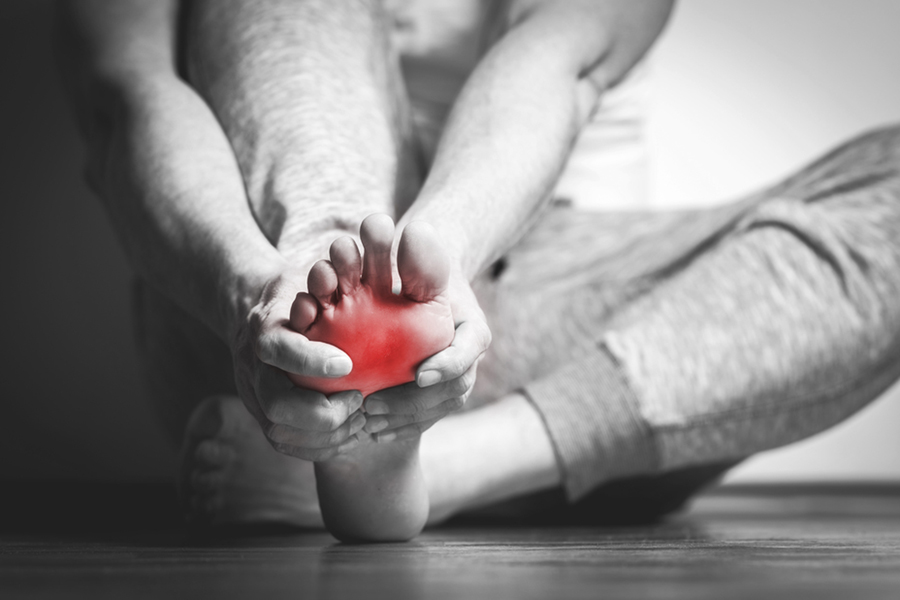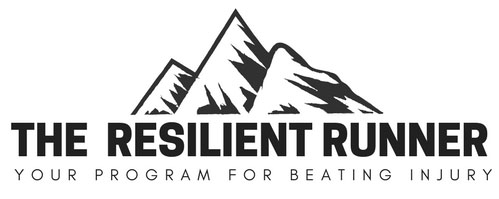Do you have pain between your toes? Does it feel like you are always standing on a pebble or have a lump in your socks between your toes? This may be a Morton’s neuroma. A neuroma is a painful condition that affects the ball of your foot. It involves a thickening of the tissue that surrounds the digital nerve bundle. A Morton’s neuroma is one of the most common types of neuromas, typically occurring between the 3rd and 4th toe, but can form between any of them.
Morton’s neuromas occur due to repeated stresses, irritation, and pressure at the ball of the foot, affecting one of the nerves that lead to the toes. It’s effectively a repetitive trauma or overuse injury. There is typically no swelling bumps or bruises with a Morton’s neuroma.

Symptoms:
- Numbness or tingling affecting the ball of the foot, between the toes, and/or the toes themselves.
- Sharp, stabbing or burning pains that are intermittent and only affect either the ball of the foot or toes (usually 3rd and 4th toe).
- The sensation of standing on a pebble or marble or having a lump in your shoe or sock.
- When running, the pain is often felt during the push off from the toes, prior to the swing through phase.
7 Tips to Self-Treat a Morton’s Neuroma:
1. Avoid wearing tight fitting, ill-fitting, and high heeled shoes. Be sure that your shoes have an appropriately sized toe box. In the case of athletic shoes (particularly, for distance running), extra room in the toe box can be beneficial as the foot will often swell during the course of the run. If you wear high heeled shoes, consider wearing them less frequently and/or switching to a shorter heel. Even wearing socks that are too small can potentially cause too much compression and lead to increased symptoms.
2. Orthotics. Many people respond well to a rigid orthotic with an extension underneath the first metatarsal bone. You may not necessary need custom orthotics. Many running stores sell an over-the-counter orthotic such as Superfeet Blue Premium Insoles. The blue tends to fit most feet, but a variety of options are available for customization. In my experience, these insoles can last 1,000 to 1,500 miles easily.
If the over-the-counter options aren’t helping you, please see a physical therapist or podiatrist for custom orthotics. Seek assistance from a professional who is a runner and has experience with treating other runners. A full length orthotic is indicated. Try to find one that has a little cushion over the hard rigid plastic portion. This will significantly help with comfort. Be sure to see a sample of any custom orthotics before you buy. I recommend not buying any orthotics without a small layer of foam or cushioning. The top layer can wear out, but hard rigid plastic without a cushion is too uncomfortable for most people to wear regularly.
3. Improve your foot mobility and strength. Weakness in the foot and ankle muscles (as well as the smaller foot intrinsic muscles) is often found in cases of a Morton’s neuroma as part of the biomechanical issues that lead to its development. Complete with instructions and photos, this guide, Morton’s Neuroma Rehabilitation Exercises, outlines how to safely perform exercises in order to improve your mobility and strength.
4. Improve your balance. Poor balance and proprioceptive awareness is often associated with muscle weakness in the foot and ankle as well as the knee and hip musculature. Poor balance and weakness throughout the kinetic chain will cause the foot and ankle complex to have to work harder to compensate (potentially, overworking the tissues). Also, weakness and balance deficits can lead to poor foot biomechanics. Please refer to the Balancing on One Foot exercise in the Morton’s Neuroma Rehabilitation Exercises.
5. Stretch. It’s critical to maintain proper calf and foot mobility. Be gentle in stretching any muscles or tissue near the painful site as to not aggravate the neuroma further. Although the initial focus is on stretching the calf muscles, also consider a full lower body stretching protocol. Tightness in the calf muscles and loss of dorsiflexion is a risk factor for many foot related disorders. Work on improving general calf and ankle mobility with an emphasis on dorsiflexion. Stretching shouldn’t cause more than a mild increase in pain or discomfort. (If you are lacking mobility in any other part of your body, this is the perfect time to work on it.)
6. Mobilize the Foot. Be sure to avoid the painful areas (particularly, near the neuroma site). It’s critical to insure proper foot mobility in the ankle as well as the first metatarsal joint. Poor mobility in the foot, specifically the first toe, will affect the biomechanics of the foot. Proceed with great caution if you attempt to mobilize the tissue in or near the neuroma.
7. Seek Help. Research concludes that nearly 80% of all cases of Morton’s neuroma can be treated through conservative measures (as outlined above). However, if you’re not experiencing relief after two to three weeks of aggressively managing the symptoms, contact your local physical therapist for an assessment and help in managing the condition. The American Physical Therapy Association offers a wonderful resource to help find a physical therapist in your area. You may need assistance in identifying the biomechanical cause of the condition in order to eliminate the pain and may need additional hands on techniques or modalities to help address the injury. A custom orthotic may be necessary. Other modalities, such as iontophoresis (a process of transdermal drug delivery by use of a voltage gradient on the skin either via a hand held machine or self-contained patch) or low-level laser therapy (LLLT), may be indicated.
More specific strategies to help you determine the cause of your Morton’s neuroma along with more thorough treatment and prevention strategies for those suffering from a Morton’s neuroma are covered in the Resilient Runner Program, which is designed to help YOU meet YOUR training goals by insuring you have the tools to avoid injury, recover quickly, and train at a peak level.

What’s Inside the Resilient Runner Program:
- Guidance on preventing and self-treating common running related injuries, including Hip Flexor Pain, Runner’s Knee, IT Band Syndrome, Piriformis Syndrome, and more!
- Specific guidelines on when and how to return to running after experiencing an injury.
- Rehabilitation guides with step-by-step photos demonstrating recommended exercises.
- Step-by-step instructions on how to apply Kinesiological tape.
- Downloadable podcasts, videos, and more!
If you’re tired of ongoing aches, pains, and injuries, learn how to become a resilient runner so that you can continue to train and compete in order to meet your goals!
